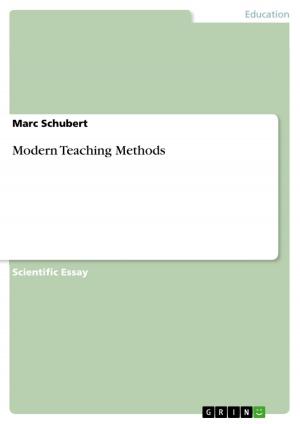Commerce or culture? Why the experience economy can be a curse and a blessing for the contemporary museum
| Author: | Anna-Theresa Lienhardt | ISBN: | 9783656740827 |
| Publisher: | GRIN Verlag | Publication: | September 12, 2014 |
| Imprint: | GRIN Verlag | Language: | English |
| Author: | Anna-Theresa Lienhardt |
| ISBN: | 9783656740827 |
| Publisher: | GRIN Verlag |
| Publication: | September 12, 2014 |
| Imprint: | GRIN Verlag |
| Language: | English |
Seminar paper from the year 2013 in the subject Museum Studies, grade: 7.5, Maastricht University, language: English, abstract: The research paper investigates the reasons why Joseph Pine and James H. Gilmore's theory of the Experience Economy can be a blessing or a curse when adapted on contemporary museums' displays. As an aggressive competitive leisure environment surrounds contemporary museums this examination is important for directors and curators to think about the image and management style of their institution. The research paper identifies the museum's main purposes like education, preservation and recreation to find out whether Pine and Gilmore's strategy helps to support them or rather undermines their position. Furthermore, the study works out the primary aspects of Pine and Gilmore's marketing strategy which are inter alia to provide visitors with enhanced experiences - educational, esthetic, escapist and/or entertaining ones - and also to make profit out of these approaches. Examples, case and research studies of authors that operate within the scopes of both culture and commerce are used to find out which impacts Pine and Gilmore's strategy can have on museums. On the one hand it turns out that the strategy is able to increase customer rates as well as to enhance visitors' experiences. One main outcome is that predominantly science museums can benefit from Pine and Gilmore's approach when they manage to combine education and experience in a proper way. On the other hand the strategy also leads to an immense commercialization of museums which increasingly try to attract customers with the help of extra facilities or experience opportunities. Above all art museums seem rather to suffer from that shift. They are accused of losing the focus on their main purpose which is the display of art. Out of these reasons, it is stated that the theory of the Experience Economy can not be a useful tool for every museum. It depends on nature and type of the museum and also on how exactly the strategy is applied to.
Seminar paper from the year 2013 in the subject Museum Studies, grade: 7.5, Maastricht University, language: English, abstract: The research paper investigates the reasons why Joseph Pine and James H. Gilmore's theory of the Experience Economy can be a blessing or a curse when adapted on contemporary museums' displays. As an aggressive competitive leisure environment surrounds contemporary museums this examination is important for directors and curators to think about the image and management style of their institution. The research paper identifies the museum's main purposes like education, preservation and recreation to find out whether Pine and Gilmore's strategy helps to support them or rather undermines their position. Furthermore, the study works out the primary aspects of Pine and Gilmore's marketing strategy which are inter alia to provide visitors with enhanced experiences - educational, esthetic, escapist and/or entertaining ones - and also to make profit out of these approaches. Examples, case and research studies of authors that operate within the scopes of both culture and commerce are used to find out which impacts Pine and Gilmore's strategy can have on museums. On the one hand it turns out that the strategy is able to increase customer rates as well as to enhance visitors' experiences. One main outcome is that predominantly science museums can benefit from Pine and Gilmore's approach when they manage to combine education and experience in a proper way. On the other hand the strategy also leads to an immense commercialization of museums which increasingly try to attract customers with the help of extra facilities or experience opportunities. Above all art museums seem rather to suffer from that shift. They are accused of losing the focus on their main purpose which is the display of art. Out of these reasons, it is stated that the theory of the Experience Economy can not be a useful tool for every museum. It depends on nature and type of the museum and also on how exactly the strategy is applied to.















